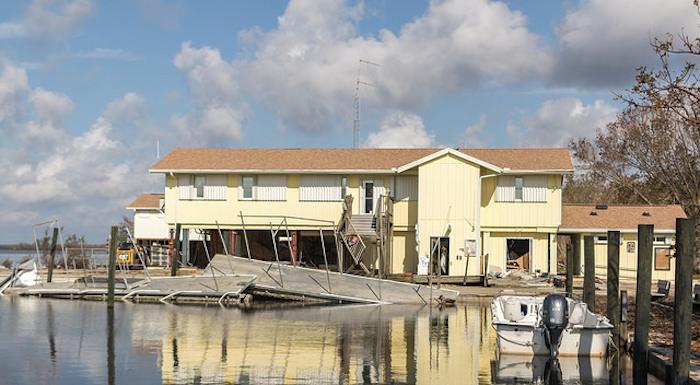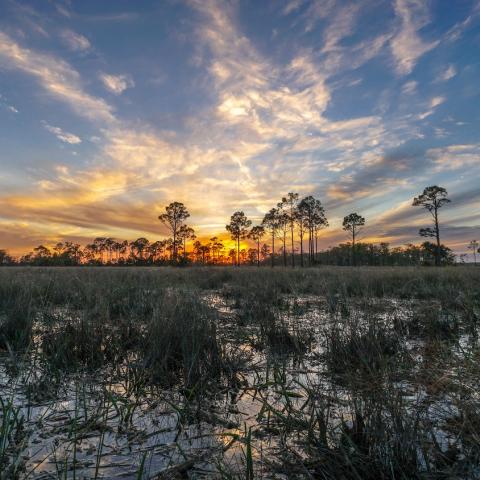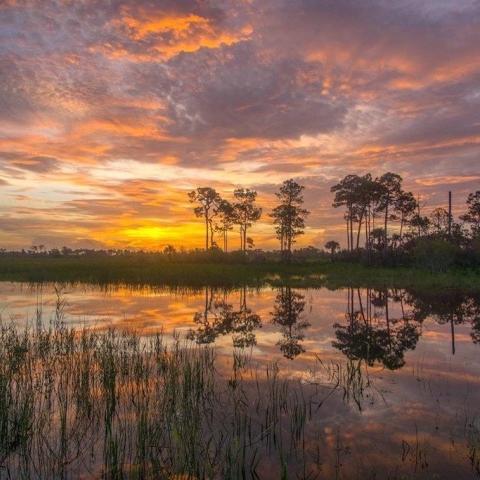
Many parks in Florida and Georgia sustained dock damage from Hurricane Irma. This is the Gulf Coast Visitor Center in Everglades/NPS
Leaking water mains, power outages, a collapsed section of the moat wall surrounding historic Fort Jefferson at Dry Tortugas National Park, and a debris-filled waterfront at Cumberland Island National Seashore were just some of the problems National Park Service crews were dealing with Saturday as they worked to clean up the aftermath of Hurricane Irma.
While crews at Fort Sumter National Monument in South Carolina were washing down historic cannons with fresh water to prevent corrosion from salt water, at Biscayne National Park in Florida crews discovered a "major leak" in the water main servicing the park. Some of the curious shacks in the historic "Stiltsville" area of Biscayne also sustained damage.

Seeming to float above Biscayne Bay's shallow seagrass beds, Stiltsville has a colorful history that dates back to the 1930s, when "Crawfish Eddie Walker" built the first shack on stilts above the water. Over the years more buildings were constructed, and the area took on an aura of mystery. Accessible only by water, the area was the place to see and be seen when visiting the winter resorts on nearby Miami Beach. Stories of illegal alcohol and gambling led to several police raids on the Bikini Club and Quarterdeck Club. At its peak in 1960, there were 27 structures on the flats, but hurricanes, fires and the ravages of being in such an exposed place made every building relatively short-lived.n 1985, the bottom land on which the stilt structures sit was deeded by the State of Florida to the Federal Government as part of Biscayne National Park. Hurricane Andrew in 1992 left only seven buildings standing, none of which existed during the area's heyday. In 2003, an agreement was reached to establish a non-profit organization called the Stiltsville Trust. The agreement is intended to preserve the structures so they can help showcase the richness of the the park's marine resources. The park has a cooperative agreement with the Trust to rehabilitate the buildings and support educational and interpretive services.--National Park Service
At Dry Tortugas National Park, roughly 70 miles south of the Florida Keys, Irma collapsed a 40-foot section of the moat wall around the Civil War-era fort, and another 15 feet had sustained "significant damage," said a Park Service release.
At Virgin Islands National Park on the island of St. John, which reportedly was hardest hit of the U.S. Virgin Islands by the hurricane, the road to the Cinnamon Bay Campground was washed out, utilities remained out, and problems had developed with the backup generators.
Everglades National Park crews were continuing to use heavy equipment to clear debris, roads in East Everglades were impassable due to downed power lines, utilities were out at Shark Valley, and roads to Hidden Lake and Long Pine Key remained closed by debris.
"An interagency team that includes Georgia Department of Natural Resources, U.S. Coast Guard, U.S. Army Corps of Engineers, City of St. Marys, and NPS is assessing how to manage the debris in and out of the water at the St. Marys waterfront" at Cumberland Island National Seashore, a Park Service release said. "It is anticipated the waterfront area will be closed for an extended amount of time."
Flooding also was a problem at places such as Fort Pulaski National Monument in Georgia.
There were no predictions when the impacted parks would be back up and running.





 Support Essential Coverage of Essential Places
Support Essential Coverage of Essential Places






